- Maya Israel
- https://education.ufl.edu/faculty/israel-maya/
- Associate professor
- UDL4CS: A Research Practice Partnershp
- University of Florida
- Alexis Cobo
- https://www.linkedin.com/in/alexiscobo830/
- UDL4CS Graduate Research Assistant
- UDL4CS: A Research Practice Partnershp
- University of Florida
- Meg Ray
- https://www.linkedin.com/in/megjray/
- K-12 Education Advisor
- UDL4CS: A Research Practice Partnershp
- Cornell University
- Zelphine Smith Dixon
- State Director
- UDL4CS: A Research Practice Partnershp
- Georgia Department of Education
Presenters’
Choice
Choice
Public Discussion
Continue the discussion of this presentation on the Multiplex. Go to Multiplex




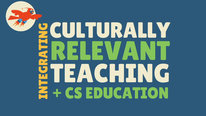
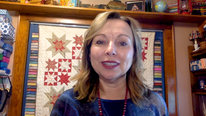

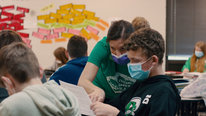
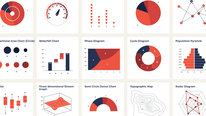
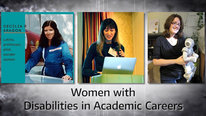
Maya Israel
Associate professor
Thanks for visiting our UDL4CS video. We are excited to share our work on this new Research Practice Partnership focused on the inclusion of students with disabilities in CS education. We are happy to answer questions, share resources, and connect!
Catherine Horn
Kara Dawson
Great project, Maya and team!! I love the RPP component. The video said that each teacher figures out what works for them. This makes sense and is how classrooms typically work but how do you support every teacher in figuring it out for themselves? I know UDL helps but it is still just a framework or a good idea until it gets put into practice. One man in the video mentions he is responsible for 1.9M students. That requires many, many teachers to figure out what works for them. I guess the scope of the project feels a bit overwhelming to me as an outsider. Regardless, awesome, innovative work!
Catherine Horn
Maya Israel
Associate professor
Thanks Kara. The issue of how to reach teachers in a way that helps them individualize for their learners is one of our major problems of practice. The approach we are taking is to focus on state and district leaders who will apply the professional development resources that we develop within their own instructional settings. For example, in NYC, instructional coaches will apply these materials in their PD while in other contexts, these same PD materials will be customized. It definitely won't solve the problem you described, but by the end of this project, we will at least have resources that can be leveraged to support teachers. Follow up grants will focus more on teacher implementation rather than on PD material development in order to close this loop.
Kevin McElhaney
Hi Maya and team! Thanks for your nice video. What would you say are a couple of specific design insights that emerge from UDL that make CS more accessible to students with disabilities and/or their teachers?
Catherine Horn
Meg Ray
K-12 Education Advisor
Hi Kevin, I'm glad that you enjoyed the video! This is a great question. One way that UDL can be thought of is as a framework for designing instruction, so there are many, many design insights. That said, a couple insights stick out from some of our recent research. Considering ways to support things like executive functions (ie. checklists, planners), persistence (ie. explicitly teaching debugging strategies, practicing strategies for managing frustration), and sustained engagement (ie. integrating choice, providing options for collaboration), can be game changers. These are all skills that effect students' experience of CS and attitudes about CS in addition to their learning. Another design consideration is to make space to think about potential barriers for individual students in each lesson, then select UDL guidelines that directly address these barriers. Teachers who are new to UDL, often feel pressure to address every single UDL checkpoint in each lesson. It's not just less overwhelming, but it's better practice when planning is more targeted.
Catherine Horn
Satabdi Basu
Maya Israel
Kevin McElhaney
Thank you Meg. I think it is interesting that these insights range from things that apply to other STEM disciplines (e.g., collaboration, choice) and some that are pretty specific to CS (e.g., debugging). I like your point about managing frustration--based on personal experience, CS invites a particular kind of frustration so I can see the need to address that head on and in a way that could be unique to CS.
Catherine Horn
H Chad Lane
Maya and team, I loved your video! This is such important work and I really enjoyed learning more about about your approach. For those of us creating CS education content, I'm wondering what advice you have about creating content, what kinds of differences have emerged in your work (you mention unique needs of schools in NY and GA), and what kinds of considerations should be top-of-list? I know it is a vague question, so any way of answering would be helpful!
Catherine Horn
Alexis Cobo
UDL4CS Graduate Research Assistant
Hi! Thank you so much for this thoughtful question. When creating CS content, think of material that is flexible- is there student choice? is there a variety of mediums (both plugged and unplugged) for students to engage with? And like any content area, begin with the end in mind- at the end of the lesson, what would you like the students to accomplish? Working backwards helps educators think through how to scaffold lessons appropriately for all types of learners. I hope this helps!
Catherine Horn
Satabdi Basu
H Chad Lane
Meg Ray
K-12 Education Advisor
All of this! I also wanted to add that as a content creator, as you incorporate the ideas that Alexis laid out above, you may want to think about ways that you can raise teacher awareness about your design decisions. With premade content, teachers often feel constricted, so explicitly giving them ideas about how they might offer choice or adapt materials to meet their needs of their individual students can be very empowering. It may help them recognize where they are already practicing UDL and build their confidence for planning in this way if it is new to them.
Catherine Horn
Satabdi Basu
Julie Brown
Great work, team! I really appreciate the scope of your work and true partnership with large school districts!
Catherine Horn
Maya Israel
Associate professor
Thanks Julie. :)
Wendy Martin
Hi Maya!
It's so exciting to see this work! I was wondering if you could talk about the RPP process, and how you continued to engage deeply with districts around this project during this year of remote learning?
Catherine Horn
Maya Israel
Associate professor
Thanks for the question Wendy. The RPP process has been really interesting. We basically have monthly meetings with our large group of practice partners. We also ask for insight through surveys from our practice partners, summarize the collective thought, then reflect collaboratively on everyone's priorities, needs, etc. If we do a good job with this project, we will have a collective body of researchers and practitioners that not only are committed to inclusion in CS education, but also have a shared vision for how to move towards more inclusive CS education. We are hopefully creating materials that are useful and relevant to everyone on this project.
Mark B. Pacheco
This looks like really important work! I would love to see how this work develops, particularly as teachers and other practitioners offer their insights into the research process.
Catherine Horn
Maya Israel
Associate professor
Thanks Mark. I am so thankful for the folks with whom I get to work on this project. I'm not exaggerating when I say that the practice partners on this project are not only local experts but are nationally known for their wealth of knowledge but the impact of their work on students, teachers, and administrators. Their contribution to the research efforts cannot be overstated.
Satabdi Basu
Hi Maya and Team,
Excellent video and such important work! I heard the video reference differences among student populations in different states like NY and GA. Could you please share any insights you've developed about design consideration for more urban versus suburban versus rural student populations? Thanks!
Catherine Horn
Maya Israel
Associate professor
Hi Satabdi. Great question. Honestly, since we are still early in the project, we don't have many lessons learned about supporting students in different geographic populations. Next year, I'm hoping to have a better answer for you. :)
Cheryl Calhoun
This is much needed work. I love the emphasis on empathy. I look forward to learning more about your project.
Maya Israel
Catherine Horn
Christine Royce
Professor
I greatly appreciated hearing about the UDL process being utilized to design computer science instruction in schools. The varied locations in which this RPP investigation is being implemented is also impressive. My questions, connect to some of the questions already posted by others and focus on how were you able to find the number of diverse partners you have for the study and are all students within Georgia system and New York City system experiencing this approach or are there selected classrooms? If selected classrooms, how were they selected?
I also appreciated the point made by one of the speakers at the end where they discussed being reflective about and changing practices when the classrooms and teachers are consulted at the inception of the project. Can you provide additional input on how they were included in the design process at the start?
Maya Israel
Catherine Horn
Alexis Cobo
UDL4CS Graduate Research Assistant
Thank you Christine for this important question. At our first meeting, we all participated in a priority mapping activity around one of the main goals/questions of "What shared priorities to encourage inclusion in K-8 Computer Science Education?" Each practice partner contributed and from there we developed "buckets" to inform our work centered around our shared priorities. We also had each practitioner and researcher share their individual skills that they were bringing to the project so we can leverage the existing work to share across these incredible partnerships. What makes the work of UDL4CS so important is truly including the voices, practices, and resources from all partners to make a broader impact on the CSEd community.
Victoria Lennon
Catherine Horn
Christine Royce
Professor
The priority mapping exercise sounds quite interesting. Are there resources or guidelines that could be shared (or are online) for the process you utilized? I think this would be a great exercise for any process where different groups are trying to collaborate.
Alexis Cobo
UDL4CS Graduate Research Assistant
Yes! This website has been incredibly helpful in getting the partnership conversation off the ground:
https://rpp.wtgrantfoundation.org/resource-archive/value-mapping-an-activity-for-surfacing-power-dynamics-and-diverse-perspectives-in-research-practice-collaborations/
Jill Berg
Leadership Coach, School Improvement Consultant & Author
Thanks for this great example of the power of research-practice partnerships! Researchers and practitioners bring distinct knowledge, experience and perspectives to the problem of designing CS units that meet the needs of each and every learner; their expertise is complementary, and this project maximizes this as an asset.
I’d be interested in hearing what researchers are learning from practioners that they didn’t know before, and vice versa.
best,
Jill
Maya Israel
Catherine Horn
Catherine Horn
Moores Professor and Chair
Thanks for this important work and the great video that really reflects what is core to the undertaking. In particular, I loved the statement that the intent is to "proactively consider all students." I was also deeply appreciative of the speaker who said that when one "marginalizes a community of of the solution process" it reduces success. Powerful statement. You've talked in previous posts about the ways you've been intentional about including teacher and school practitioner voices and thinking. I wonder if you could offer some specific examples of ways that you may have also included students, parents, family, and community voices and thinking in the full arch of this work.
Appreciate very much what you are doing and the likely impact it will have on behalf of kids!
Cathy
Maya Israel
Maya Israel
Associate professor
Thanks Cathy for your statement and question about student/family/community voices. This is an area that we have not yet addressed in this project although we acknowledge the importance of doing so. Our project started in January and thus far, we have focused on strengthening the partnerships between the practice and research partners. I will bring your statement to our meetings as I agree that families are critical for student success in CS education, sense of belonging in CS, etc. and if we don't address it, it is a lost opportunity.
Catherine Horn
Catherine Horn
Moores Professor and Chair
Maya - thanks for your thoughtfulness in response and for the work as it moves forward. Can't wait to see what you all learn!
Cathy
Scott Bellman
Thanks for promoting the full inclusion of all computer science learners! I enjoyed learning about your project.
Pasha Antonenko
What a timely project and a great partnership! I am looking forward to learning more about your work through publications etc about how UDL is operationalized within the context of K-8 CS education.
Alan Peterfreund
Maya and Team: Excellent video. Really appreciated the focus on empathy as part of design as a modeling activity.
Bridget Dalton Dalton
Great job integrating UDL to expand opportunities for all! I look forward to learning more from this project. We also apply UDL to our project, informing our design of the learning experiences.
Deborah Seehorn
This is a great project which is very much needed. I love that you are working with and supporting teachers to design equitable CS experiences for ALL students. That is so important for the "mind-shift" that must occur.
Monica Cardella
Thank you for your work on this project, and thank you for creating and sharing this video. I enjoyed the inclusion of students and teachers in the videos. Thank you for you sharing how you are thinking about your project, how you are using UDL to support teachers, how you are thinking about equitable computer science, and how you are collaborating as practitioners and researchers in multiple states.